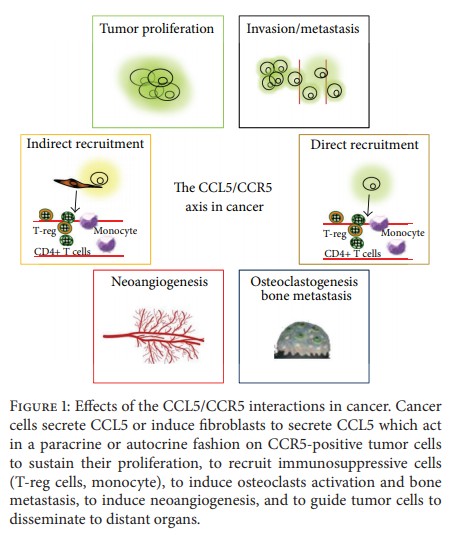I have been “inducing” few friends and family
Post# of 158034

When the price goes up I am a hero and get invited to events and dinners … even get "out of the blue "good morning, how-are-you? calls” … when it goes down I get even more phone calls asking: when is it going to recover?? When should I sell ??? And social events and invitational call-ins diminish dramatically.
In any way. To the point: ” what do I tell everybody ??
The price will recover when we get an EUA (if we get one I as always say). But ... the price will go ballistic when we get a BTD in Oncology.
All bets are off then and this is what I am aiming at.
So … in order to keep my cool and explain to myself why I bought even more shares in the $4-$5 range (I am purposely not saying exactly where
For those willing (or desperately needing) to do the same I recommend “The Inflammatory Chemokine CCL5 and Cancer Progression” by D. Aldinucci1 and A. Colombatti.
https://www.hindawi.com/journals/mi/2014/292376/

This discusses several cancers and depicts the role of CCL/CCR5 in several hematological malignancies (multiple Myeloma, Hodgkin Lymphoma) and solid tumors: Breast, Melanoma, Gastric, Colon, Prostate, Ovarian.
For example, in respect to Breast Cancer:
Quote:
4.1. Breast Cancer. CCL5, while being minimally expressed by normal breast epithelial duct cells, is highly expressed by breast tumor cells at primary tumor sites, regional lymph nodes, and metastatic sites, indicating that CCL5 expression is acquired in the course of malignant transformation and that CCL5 plays a role in breast cancer development and/or progression. Increased positivity and expression levels of CCL5 by breast tumor cells are significantly associated with disease progression, relapse, and/or metastasis, compared to patients in remission. In this tumor the major source of CCL5 is the tumor cells ; however, CCL5 is also expressed by infiltrating leukocytes and mesenchymal stem cells (MSCs) of the tumor microenvironment. CCL5 is also present in interstitial fluids perfusing the tumor, in pleural effusions, and in serum. A functional CCR5 receptor is expressed by a subpopulation of human breast cancer cell lines and displays a functional response to CCL5. In addition, oncogene transformation induces CCR5 expression, and the subpopulation of cells that express a functional CCR5 also displays increased cell migration and invasiveness. A microarray analysis on 2,254 human breast cancer specimens found increased expression of CCL5 and its receptor CCR5, but not CCR3 , in the basal and HER-2 genetic subtypes. In contrast, when a similar analysis was performed in non-neoplastic breast samples, no correlation between CCL5 and CCR5 expression levels was found, indicating that CCL5/CCR5 signaling may be preferentially activated during the development of specific breast cancer subtypes. CCL5 expression is strongly associated with the progression of breast cancer, particularly the triple-negative breast cancer (TNBC), and may represent an immunotherapeutic target in the TNBC. Hypoxia is a major selective factor that promotes the growth of tumors with a diminished susceptibility to radiation and chemotherapy and is associated with cancer progression, cancer metastasis, and thus poor prognosis. Hypoxia induces a strong increase of both CCL5 and CCR5 expressions by breast cancer cells. Under this experimental condition CCL5 stimulates cell migration rather than cell proliferation and neutralization of CCL5 inhibits the hypoxia-induced migration of cancer cells. Similarly, overexpression of CCR5 increases cell migration, and knockdown of CCR5 attenuates hypoxia-mediated cell migration.
It goes on for the other types of cancer and goes on to depict how can the axis be interrupted.
Conclusion: we are in the right path and we should be granted a BTD pronto !!! The “prize” is huge in terms of patients worldwide and there is no money in thos word to pay for the benefits that will be brought-in if we can demonstrate clinical benefit.
We will
 (27)
(27) (0)
(0)